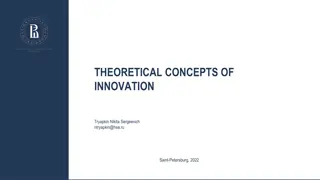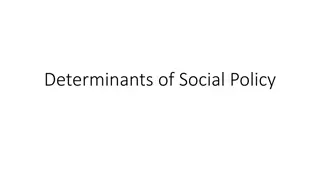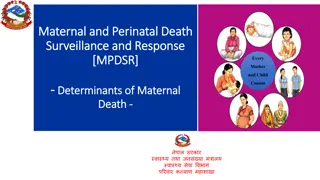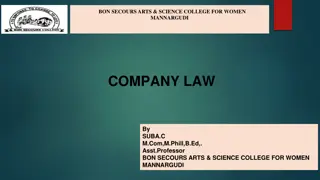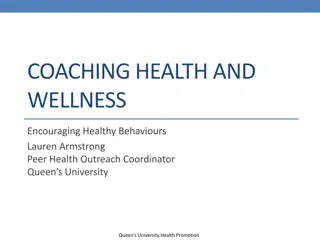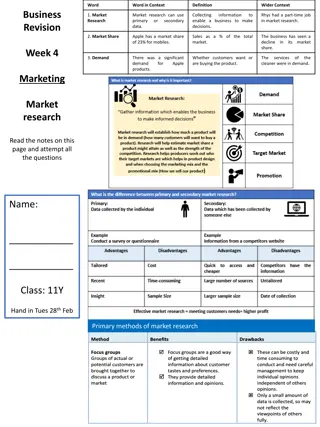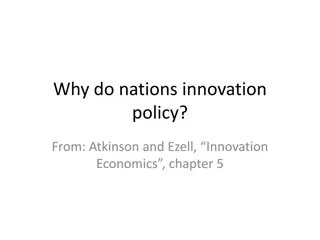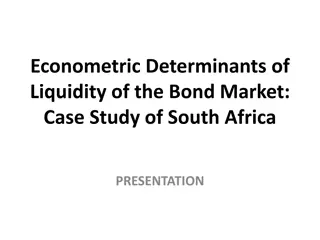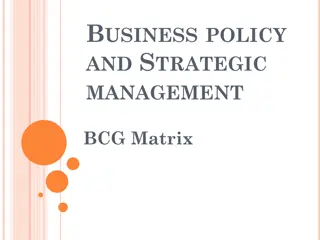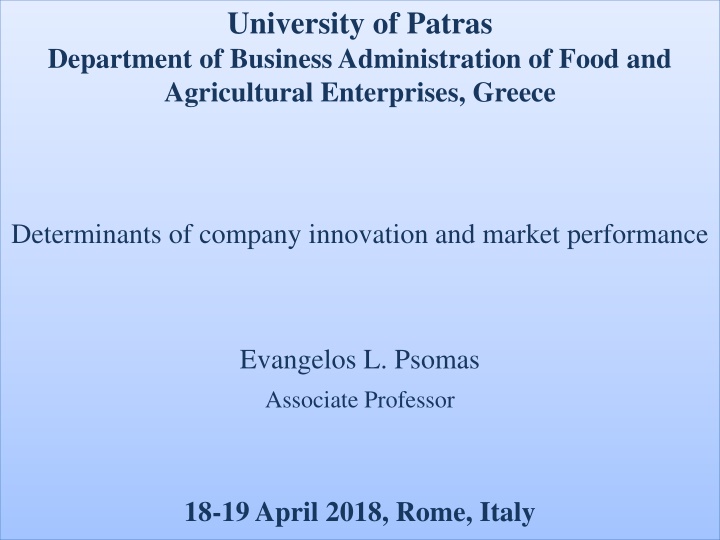
Determinants of Company Innovation and Market Performance in the Global Business Environment
Explore the impact of globalization on business innovation and competitiveness, emphasizing the role of top management in creating an innovative culture. This study highlights the need for companies to focus on both product and process innovation to gain a sustainable competitive advantage. Current research gaps in understanding dynamic determinants, quality practices, and the relationship between innovation and firm performance are identified, suggesting avenues for future empirical studies and development of innovation management strategies.
Download Presentation

Please find below an Image/Link to download the presentation.
The content on the website is provided AS IS for your information and personal use only. It may not be sold, licensed, or shared on other websites without obtaining consent from the author. If you encounter any issues during the download, it is possible that the publisher has removed the file from their server.
You are allowed to download the files provided on this website for personal or commercial use, subject to the condition that they are used lawfully. All files are the property of their respective owners.
The content on the website is provided AS IS for your information and personal use only. It may not be sold, licensed, or shared on other websites without obtaining consent from the author.
E N D
Presentation Transcript
University of Patras Department of Business Administration of Food and Agricultural Enterprises, Greece Determinants of company innovation and market performance Evangelos L. Psomas Associate Professor 18-19April 2018, Rome, Italy
The structure of the presentation 1. The main subject of the study in light of the current business environment 2. The existing literature gap and the future research suggestions 3. The objectives of the study 4. The originality and the contribution of the study 5. Formulation of the theoretical model 6. Methodology 7. Results 8. Conclusions & practical implications 9. Limitations and future research recommendations
The main subject of the study in light of the current business environment Globalization environment by making it more competitive and boosting innovation. influences the business In order to survive and compete in global and niche markets, incorporate into their strategy the innovation. companies should Incorporate innovation not only with regard to products but also processes. Process product innovation and this is strongly supported in the empirical literature. innovation is supplemental to
Reflecting the main factors of the study The appropriate environment/culture for innovation lies with the top management team and its quality practices. main responsibility for creating the The customers is improved when a company focuses on process quality management. ability to introduce innovation to Being innovative in terms of products and processes, helps companies gain a sustainable competitive advantage in the market.
1.Current research has still failed to empirically identify the role of dynamic determinants to different innovation. Literature gap types of 2. There is a lack of research studies examining how quality practices are related to innovation. management 3. It is still not clear what managers should change in the innovation process and the underlying structures. organizational 4. Empirical studies that examine the relationship between innovation and firm performance are limited. Research study on innovation
Future research suggestions 1. systems, to unveil how these are being implemented in SMEs. Look at innovation management 2. Future research in innovation should be supported by longitudinal studies. 3. A periodic assessment is required not only of innovation outputs, but also of inputs that determine innovation initiatives. a company s 4. More knowledge is needed about how quality management can be developed to stimulate and improve innovation. 5. More empirical work is needed to examine the impact of several innovation dimensions on company performance. 6. Future research studies empirically validate theoretical models that relate TQM, innovation, business performance. Research study on innovation
In order to fill the literature gap, the present study follows the suggestions of several authors for future research studies with regard to innovation. Atheoretical model incorporating determinants of company innovation, innovation dimensions and market performance is empirically validated in the present study. The study aims at exploring 1. the impact of 'quality practices of top management' and 'process quality management' on 'product and process innovation' 2. the impact of these innovation dimensions on the 'market performance' of a company.
The originality and the contribution of the present The present study provides up-to-date empirical evidence to validate a theoretical model not examined in previous research studies, focuses on the innovativeness of companies from the technical perspective (process and product innovation), confirms the validity of latent factors by applying EFAand CFA, tests the goodness of fit of the theoretical model to the collected data through SEM, uses a large sample of Greek companies operating under circumstances of economic downturn.
1. Literature review Innovation dimensions selected Literature distinguishes different types of innovation and researchers have explored its classification in various ways. Some studies are based on a single type of innovation such as process innovation or product innovation, whereas other studies are based on both process and product innovation. In this study innovation is described in terms of product and process innovation, considering them as the most common dimensions of company innovation.
2. Literature review - Definitions Product innovation is defined as a new product or service introduced to meet an external user or market need. Process innovation is defined as the implementation of a new or significantly improved production or delivery method. Quality-oriented leadership means top management commitment to quality, communication of the quality policy and goals, and review of the quality issues, etc. Business process refers to a coordinated chain of activities intended to produce a business result or to a repeated cycle of activities that achieves a business goal. Market performance is conceptualized based on a company's market share, competitive position and penetration of the market.
3. Literature review Product innovation Justification It is a matter of viability, economic growth and competitive edge. Introducing an innovative product in times of recession is the right choice, even if available resources are scarce and the chance of increased sales is minimum.
3. Literature review Process innovation Justification Optimizing the sequence of the production procedures is the core of process innovation and it can be associated with new resources, tools, procedures, techniques and software. Process innovation aims to maximize the flexibility of the production processes, improve the quality of products and minimize production cost.
4. Literature review and research hypotheses Quality practices of top management and innovation Quality-oriented leaders communicate the innovation ideology within the company, spread the innovation vision and goals to the company s workforce and clarify the fact that innovation can be achieved only if everybody commits to that goal. Leaders' quality personality ensures a suitable innovation process. Quality improvement activities, provided that they are properly managed, lead to successive innovations over time. Innovation oriented cultures depend on appropriate quality leadership. Quality-oriented leadership is positively related to company innovation and performance. RH1: Quality practices of top management are positively related to product innovation. RH2: Quality practices of top management are positively related to process innovation.
Quality Practices of Top Management RH1 Product Innovation RH2 Process Innovation
5. Literature review and research hypotheses Process quality management and innovation Reliable and effective processes enhance a company's ability to innovate in terms of its products and processes. Process management affects positively incremental innovation. RH3: Process quality management is positively related to product innovation. RH4: Process quality management is positively related to process innovation.
Product Innovation RH3 Process Innovation Process Quality Management RH4
6. Literature review and research hypotheses Quality practices of top management & Process quality management A company s biggest hurdle in being process oriented is inadequate leader support, the process orientation of a company is enhanced through the quality practices of top management. RH5: Quality practices of top management and process quality management are inter-related.
Quality Practices of Top Management RH5 Process Quality Management
7. Literature review and research hypotheses Innovation and market performance Linking business strategy to quality processes and innovation improves business performance. Integration of TQM and innovation increases the profits and the market share of a company. Innovation is a main factor influencing the performance, long-term survival and sustainability of organizations. Innovation can increase customer satisfaction and loyalty and company performance with regard to economic terms and the market. Companies looking for better market position turn to innovation meaning product and process innovation RH6: Product innovation is positively related to market performance. RH7: Process innovation is positively related to market performance.
Product Innovation RH6 Market Performance RH7 Process Innovation
Theoretical framework Quality Practices of Top Management RH1 Product Innovation RH6 Market Performance RH3 RH5 RH2 RH7 Process Innovation Process Quality Management RH4
8.1 Methodology Questionnaire development A manufacturing questionnaire, which comprehensive literature review. research study was carried using was out in structured through Greek companies a designed a The quality practices of top management used in the present study, have been adapted from the studies of Zu (2009), Rhee et al. (2010) and Fotopoulos and Psomas (2010). The management have been adapted from the studies of Kaynak (2003), Zu (2009), Fotopoulos and Psomas (2010) and Psomas et al. (2011). measured variables of process quality The innovation practices are drawn from the studies of Jimenez-Jimenez et al. (2008), Martinez-Costa and Martinez-Lorente (2008), Jimenez-Jimenez and Sanz- Valle (2011) and Kafetzopoulos and Psomas (2015). The studies of Yam et al. (2004), Evangelista and Vezzani (2010) and Gunday et al. (2011), are used for drawing the items describing market performance.
8.1 Methodology Questionnaire development The preliminary questionnaire was subjected to a series of revisions based on discussion with academicians and professionals. It was also pilot tested on 20 companies in Greece, proving its appropriateness. Thus, the questionnaire constructs and their associated items possess validity. sufficient content Respondents were asked to indicate the degree of their agreement or disagreement statements of the questionnaire, using a seven- point Likert scale, where 1 represented strongly disagree and 7 represented strongly agree . with the
8.2 Methodology Sample 1 A sample of 2000 companies was randomly selected from the list of companies that were recorded in the data base of ICAP (the largest business information and consulting firm in Greece). The questionnaire was sent to the Chief Executive Officer (CEO) of the sample companies through e-mails. Two follow-up reminder e-mails were sent two and four weeks after the initial e-mailing . In total, 433 valid questionnaires were collected, yielding a response rate of 21.65% which is acceptable compared to the response rate of similar research studies.
8.2 Sample - Sectors Manufacturing 212 = 49% 221 = 51% Services
8.2 Sample 3 - Size 14% less than 50 employees 9% more than 50 and less than 100 employees more than 100 and less than 250 employees more than 250 employees 62% 15%
8.2 Methodology Sample Certification of the Sample Half of the sample companies implement a QMS and have been certified according to the ISO 9001 standard. 20% implement a FSMS and have been certified according to the ISO 22000 standard. 4% implement an EMS and have been certified according to the ISO 14001 standard. The majority of the companies participating in the present study have been certified according to an international standard. The vast majority of the non-certified sample companies, according to the statement of the CEOs, have already taken the initial steps to develop a QMS, based on which they will be certified according to the ISO 9001 standard soon.
8.2 Methodology Sample - Certified vs Non-Certified companies The certified and non-certified companies were compared in terms of the number of their employees (Mann Whitney Test) and no statistically significant differences were found. Comparing the certified and non-certified companies in terms of the questionnaire items (T-test), no statistically significant differences were found either. The companies certified according to ISO 9001, ISO 22000 and ISO 14001 were compared in terms of the questionnaire items (one-way ANOVA), and no statistically significant differences were found among the three sub-samples of companies. The sub-samples of the participating companies take into similar consideration all the theoretical factors considered in the present study (with regard to quality management, performance). innovation and market
8.2 Methodology Sample - Non-response bias The early and late responding companies were also compared in terms of the number of their employees (Mann Whitney Test) and the questionnaire items (T-test) and no statistically significant differences were found. Several non-responding companies stated, when contacted, that the major reason for them not participating in the research study was lack of time , company policy of not disclosing information and the fact that they were not interested . Non-response bias is not a cause for concern in this study.
8.2 Methodology Sample - Common method variance Since the questionnaire was completed by a single respondent from each participating company, the common method variance had to be checked. The single-factor test was applied, loading all the questionnaire items into a principal component analysis and forcing them into one latent factor. This method produced poor results as indicated by the 22 percent of the variance extracted, while many items suffered from poor factor loadings, which fell below 0.5. The common method variance is not a substantive problem in this study.
8.3 Methodology Data Analysis Given that the number of the responding companies (433) is deemed large enough for multivariate data analysis, EFA is applied to reduce the initial set of the variables to a more manageable set of scales and to extract the latent factors. CFA is applied to refine the resulting scales in EFA. A series of tests are also performed through EFA and CFA to determine whether the latent factors developed in this study have sound psychometric properties. These tests concern unidimensionality, multicollinearity, reliability, convergent validity, discriminant validity and nomological validity. he relationships between the latent factors are determined through Structural Equation Modeling (SEM).
9. Results 9.1 Exploratory Factor Analysis (EFA) Items identified in the literature are used as measured variables of an EFA. The result is the establishment of five latent factors (Kaiser-Meyer-Olkin = 0.917, Bartlett s test of Sphericity = 4995.923, p = 0.00, eigenvalue > 1, Measures of Sampling Adequacy > 0.80, factor loadings > 0.632, Cumulative Variance = 70.5%). The extracted latent factors are explained using the measured variable loadings and can be labeled in accordance with the respective theoretical factors considered in the present study, as follows: 'quality practices of top management', 'process quality management', 'product innovation', 'process innovation' and 'market performance'.
9. Results 9.2 Confirmatory Factor Analysis (CFA) CFA is performed to further validate the measures for all the factors considered in this study. The goodness of fit of the model to the measured data is established. The results consistently support the structure of the latent factors revealed as discussed earlier in the EFAstage.
Table I: Goodness of fit measures Goodness of fit measures The Basics of Goodness of Fit Chi-square Probability level Absolute Fit Indices Chi-square/ degrees of freedom ( 2/df) Root Mean Square of Approximation (RMSEA) Root mean square residual (RMR) Goodness of Fit Index (GFI) Incremental Fit Indices Normed Fit Index (NFI) Incremental Fit Index (IFI) Tucker-Lewis coefficient (TLI) Comparative Fit Index (CFI) Parsimony Fit Indices Parsimony Comparative Fit Index (PCFI) Parsimony Normed Fit Index (PNFI) CFA model 404.681 0.000 2.529 0.059 0.040 0.914 0.920 0.950 0.941 0.950 0.8001 0.7751
Table IIa: Confirmatory Factor Analysis Standardized Regression Weights Squared Multiple Correlations Latent factors Measured variables Top management frequently communicates company quality goals and vision to employees (var1) Top management emphasizes pursuing knowledge which fits the new business environment (var2) Top management considers that employees ability to learn is the key to company competitive advantage (var3) Quality issues are reviewed management meetings (var4) Inspection, review, or automatically implemented (var5) The work processes are automatically implemented (var6) Quality tools and techniques are used to reduce process variation (var7) Statistical techniques are applied to reduce process variation (var8) 0.771 0.594 Quality practices of top management 0.786 0.618 0.819 0.671 in the plant s 0.691 0.477 checking of work is 0.704 0.496 Process quality management 0.712 0.507 0.737 0.543 0.757 0.573
Table IIb: Confirmatory Factor Analysis Standardized Regression Weights Squared Multiple Correlations Latent factors Measured variables The level of newness (novelty) of the company s products is increased (var9) 0.751 0.564 The incorporated in the new products (var10) latest technological innovations are 0.865 0.748 Product innovation The frequency of developing new products is high (var11) The number of the new products introduced to the market is high (var12) The competitiveness of the company from the technology point of view is high (var13) The latest technological innovations are frequently adopted in our processes (var14) The technology used characterized by novelty (var15) The rate of changes in the processes and techniques is high (var16) 0.755 0.570 0.669 0.448 0.801 0.642 0.887 0.787 Process innovation in our processes is 0.922 0.850 0.847 0.717
Table IIc: Confirmatory Factor Analysis Squared Multiple Correlati ons Standardized Regression Weights Latent factors Measured variables The company's market share is high (var17) 0.688 0.473 The company's penetration of the market is high (var18) 0.686 0.471 Market perfor- mance The company's image within the market is high (var19) 0.725 0.526 The company's position in the market considering competitiveness is high (var20) the 0.783 0.613
9. Results 9.2 Confirmatory Factor Analysis (CFA) A. Unidimensionality of the factors The item loadings (from both EFAand CFA) exceed the 0.50 threshold. he respective squared multiple correlations are satisfactorily high. This means that a high amount of measured variable s variance is explained by a latent factor. he goodness of fit of the model to the measured data. All indicators are well loaded onto the factor they are intended to measure. Thus, the unidimensionality of the factors is ensured.
9. Results 9.2 Confirmatory Factor Analysis (CFA) B. Multicollinearity None of the inter-item Pearson correlation coefficients in this study is greater than 0.9. All the tolerance values (1-R2, where R2represents the squared multiple correlation) are well above the minimum acceptable cut-off value of 0.1. All the variance inflation factors (VIF) (which are calculated as the inverse of the tolerance value) are well below the maximum acceptable cut-off value of 10. The above indicate absence of multicollinearity type problems in the data.
9. Results 9.2 Confirmatory Factor Analysis (CFA) C. Reliability & construct validity Reliability analysis is also applied by the internal consistency method calculating the Cronbach s Composite/Construct Reliability index. alpha coefficient and the All the Cronbach s alpha coefficients and the Construct Reliability indexes are above 0.69 indicating that the selected items reliably estimate the latent factors. Construct validity is confirmed by evaluating convergent validity (AVE > 0.520); discriminant validity (AVE > Corr2); and nomological validity (significant correlations among the extracted latent factors).
Table III: Model reliability and validity a:AVE = i2/ n, (number of items i = 1 ..n, i = standardized factor loading); b: CR = ( i)2/ [( i)2+ ( i)], (number of items i = 1 .n, i = standardized factor loading, i= error term); c: the highest squared correlation between the factor of interest and the remaining factors. Reliability Cronbach s alpha Average Variance Extracteda Construct Reliabilityb Latent factors (Corr)2c Quality practices of top management 0.851 0.590 0.852 0.376 Process quality management 0.820 0.530 0.818 0.453 Product innovation 0.858 0.583 0.847 0.471 Process innovation 0.921 0.750 0.926 0.471 Market performance 0.781 0.520 0.697 0.291
9. Results 9.3 Structural Equation Modeling (SEM) The SEM procedure is applied (maximum likelihood method) to estimate the causal relations between the latent factors and to confirm or refute the hypotheses presented earlier (H1-H7). Product innovation is positively and significantly affected primarily by the quality practices of top management and secondarily by process quality management. Process innovation is positively and significantly affected primarily by process quality management and secondarily by the quality practices of top management. Both contributors to company market performance. product and process innovation are significant positive
Figure 2. The structural relationships between the latent factors
10. Conclusions This study empirically validates a theoretical model with the company innovation dimensions at its center. The study supports the significant contribution of both 'quality practices of top management' and 'process quality management' to company innovation dimensions, namely 'product and process innovation'. Product innovation' is primarily influenced by 'quality practices of top management', while 'process innovation' is primarily influenced by 'process quality management'. Company innovation dimensions, and especially the adoption of 'process innovation', significantly influence a company's overall 'market performance'.
The empirically validated theoretical model of the present study can guide company policy makers to select the appropriate strategy through which a company can lay the foundations to increase its market performance, and thus, overcome the current economic downturn and financial crisis. Policy makers should give priority to process innovation initiatives, without however ignoring product innovation, given that both innovation dimensions enhance a company's market performance. Policy makers can make a company enhance its process orientation in order to successfully develop simultaneously motivating top managers to inherently adopt quality practices as a means to generate innovative ideas for new product development. Practical implications innovative processes, while
In order for the policy makers to formulate such a robust strategy, ensure that it permeates through the company and make it sustainable, they can base their efforts on organizing internal educational seminars, consulting experts in the field of quality and innovation management, stimulating company managers to attend international conferences and finally benchmarking "excellent" companies. In doing so, the main concepts of the model suggested in the present study can be widely and strongly adopted by the company managers and employees. Practical implications
Researchers can also benefit from the present study findings. They can use the suggested valid model as an assessment tool (for quality, innovation and market performance), a benchmarking tool and a tool for the design of their future research studies. Practical implications
11. Limitations The sample of the responding companies is limited to Greek small, medium and large companies manufacturing and services sectors. which belong to both the In the business environment in which the sample companies operate, a financial crisis dominates which influences a company's efforts to innovate and penetrate a wider market. The subjective character of the data collected through the CEOs involves also the risk of receiving biased responses. The suggested model examines only 'quality practices of top management' and 'process quality management' as influencing factors of company innovation.
12. Suggestions for future research It is worth testing the validity of the model suggested in the present study, in samples of SMEs and large companies operating under similar economic conditions in Europe or worldwide. Testing this model for its validity in specific subsectors of the manufacturing industry (e.g. the food industry) or the services sector could also be a future research direction. Given that the data collected constitutes subjective estimations, it is recommended that objective business evidence be used, drawn from the companies' official documents and other data. Finally, it is strongly suggested that more influencing factors of company innovation be incorporated into the model.




